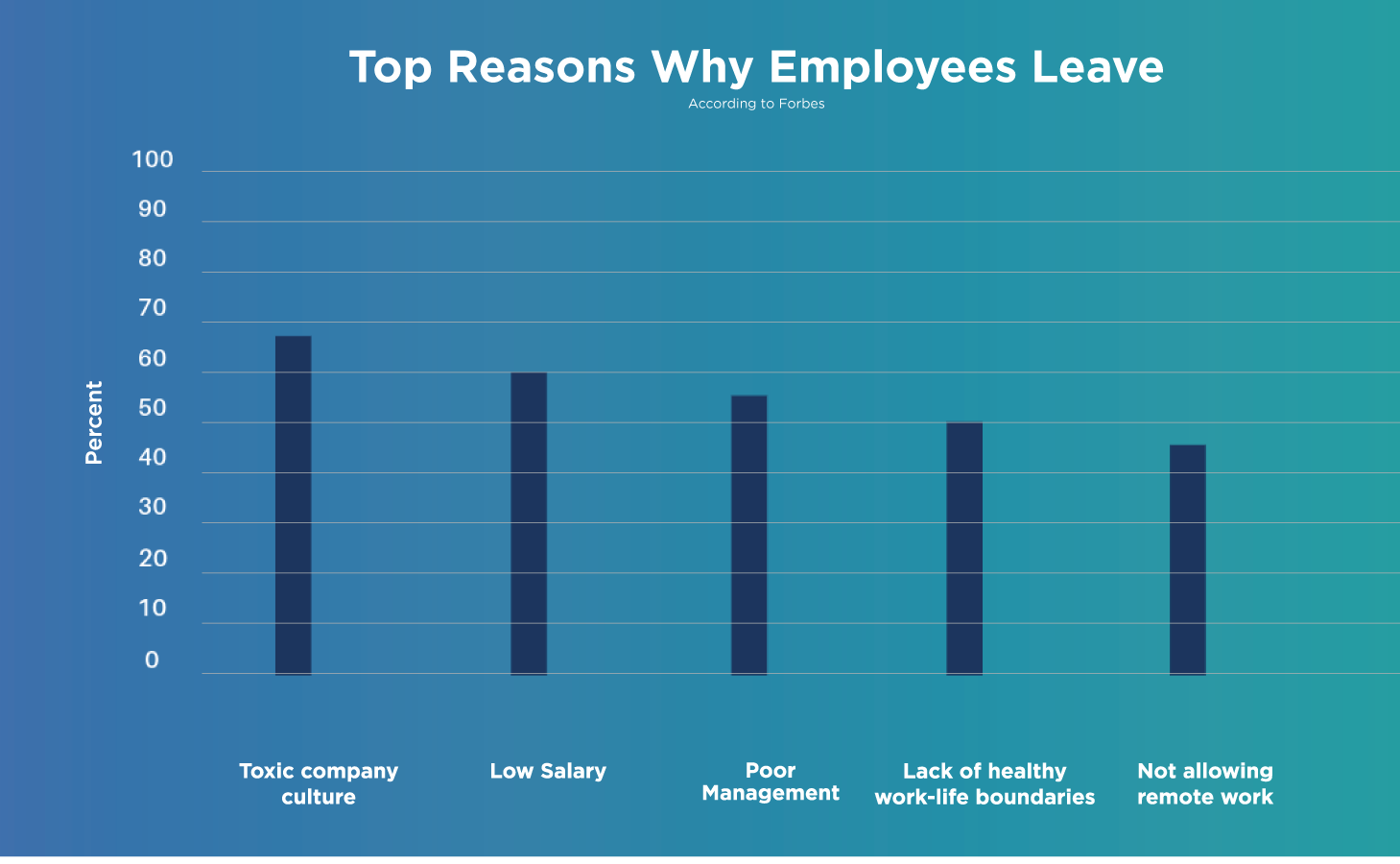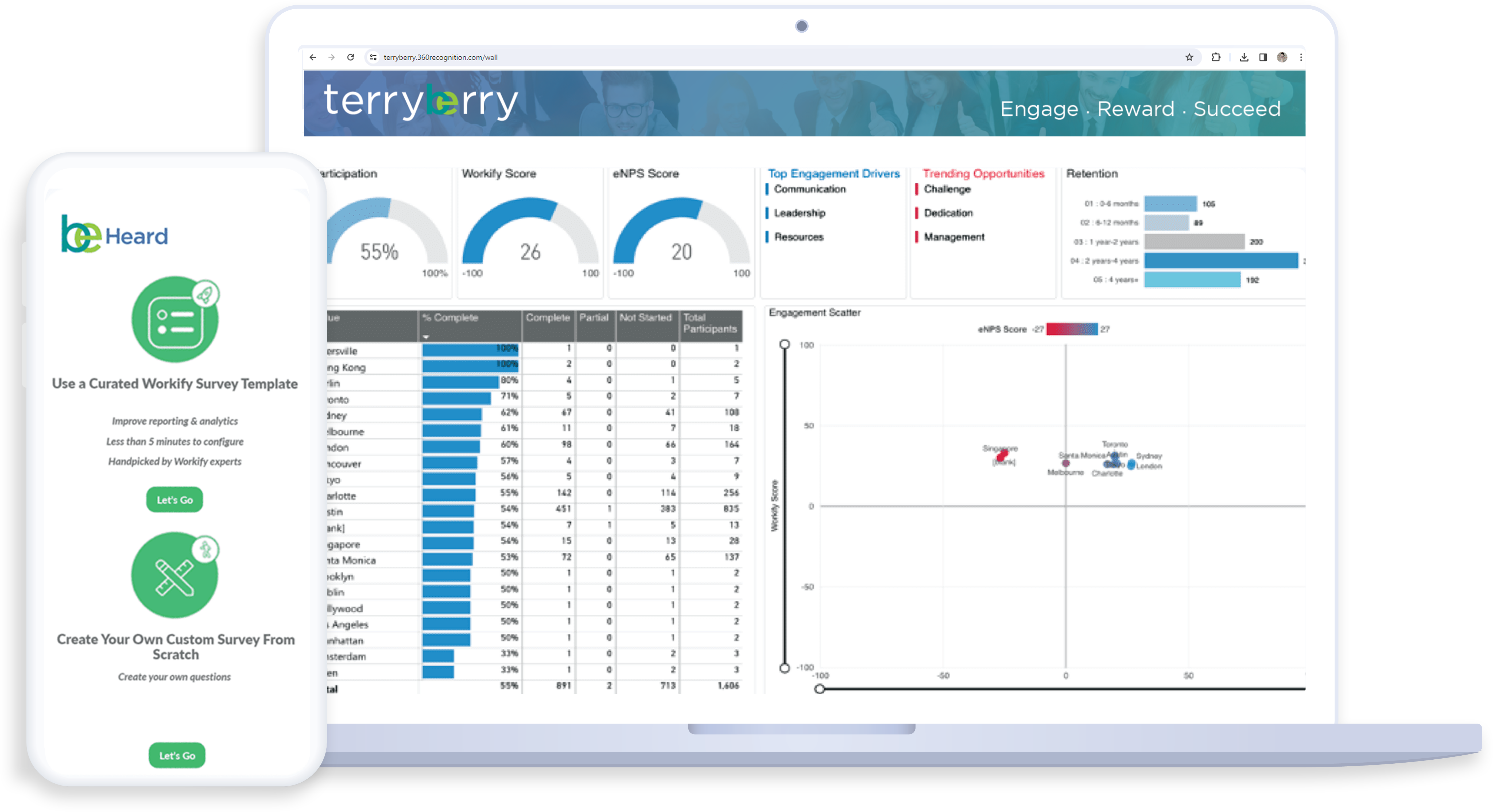April 9, 2024


Employee retention is a hot topic in the world of human resources. It's no secret that employee turnover can be costly for businesses - both in terms of money and lost productivity.
Each lost employee equates to a cost of 1.5 to 2 times that employee's annual salary and it can take a business up to six months to replace them.
According to Gallup's State of the Global Workplace Report, only 33% of employees across the world are engaged in the workplace. Without engagement, retention becomes even more of a challenge.
That's why companies need to have strategies in place to retain their employees. In this article, we'll dive into the details of employee retention and ten employee retention strategies that work.
What is Employee Retention and Why is it Important?
Employee retention refers to an organization's ability to keep its valued employees. It's not just about preventing people from quitting, but also about creating an environment that motivates them to stay and thrive for a specific period, whether it's a few years or the long haul.
Employee retention is a critical component of a company's success for many reasons - high employee retention reduces costs associated with recruiting and training new hires, leads to higher employee morale and loyalty, and results in greater productivity.
The goal of any successful employee retention strategy is to create an environment where employees are motivated to not only stay with a company but actively engage in their roles.
And with 77% of the reasons why employees leave being preventable, effective retention strategies can make a significant impact on a company's success.
Top Reasons Why Employees Leave
When creating an employee retention strategy, it's critical to understand the factors that play into someone leaving their job so you can better plan on how to prevent it.
The top reasons why employees leave, according to Forbes:


- Toxic Work Culture: A culture of negativity, gossip, or bullying can create a hostile work environment that pushes employees out.
- Compensation and Benefits: Feeling underpaid or that their benefits package isn't competitive can lead employees to look for new opportunities.
- Poor Management: A bad boss who is disrespectful, unsupportive, or unclear in their expectations can make a job unbearable.
- Work-Life Balance: Employees today are seeking a healthy work life balance. Inflexible work schedules or a culture that expects constant availability can lead to burnout and drive employees away.
- Not Allowing Remote Work: Today, more than ever, employees are looking for flexible work arrangements like remote or hybrid work.
Additional common reasons cited are:
- Lack of Recognition or Appreciation: Feeling undervalued or unappreciated for their contributions can be a major demotivator for employees.
- Limited Growth Opportunities: Employees who feel stuck in a dead-end job with no chance for advancement are more likely to leave for a company that offers career development opportunities.
- Burnout: Feeling overworked and overwhelmed can lead to burnout, which can cause employees to leave their jobs in search of a better work-life balance.
In addition to these factors, some employees may leave their jobs due to personal reasons, such as relocation or changes in childcare needs.
RELATED: Employee Disengagement: 7 Signs Your Employees are Disengaged (and What to Do About It)
12 Proven Employee Retention Strategies That Work
No matter the size of your business or industry, you need effective retention strategies to keep your talent. Here are eleven proven strategies that have been used successfully by companies around the world to help retain employees.


1. Build an Inclusive Workplace Culture
Creating an inclusive work environment makes employees feel welcome and accepted and increases job satisfaction and loyalty. But don't just talk the talk — walk the walk.
Having a diverse leadership team, offering flexibility in work arrangements, and having diversity and inclusion initiatives are all great ways to make your organizational culture more inclusive.
As part of your strategy, you can encourage employees to participate in cross-functional teams, host training sessions on unconscious bias, and create a safe space for open dialogue.
2. Establish a Listening Strategy
Employee surveys can be a powerful tool to improve employee retention in several ways. One way is that surveys provide a confidential platform for employees to express their concerns and frustrations.
This allows management to identify areas where they might be falling short, like workload, company culture, or compensation, before they lead to resignations.
Furthermore, the simple act of asking for feedback shows employees that their voices are valued. When they see their feedback being used to make positive changes, it can increase their sense of engagement and satisfaction.


3. Offer Competitive Salaries and Benefits
Providing competitive salaries and benefits will show your employees that you value their contribution to the company's success. Take into account the local market salary rate and the cost of living in your area when determining salaries.
Keep in mind it’s not just about the money. In addition to competitive wages, consider offering flexible hours and telecommuting options, generous vacation policies, and other perks and benefits such as gym memberships or health savings accounts (HSAs).
Having a high salary alone may not be enough to keep employees engaged and committed to the organization. Employee appreciation comes in many forms, and compensation is just one of them.
4. Prioritize Professional Development Opportunities
Providing opportunities for professional development is a great way to show your employees that you value their growth and want them to stay with the company. Offer courses, workshops, and other training programs to help develop their skills so they can stay current in their field and progress in their careers.
When it comes to professional development, don’t forget to provide mentorship opportunities. Mentoring or coaching programs are an effective way to help employees develop new skills, allowing them to learn from more experienced colleagues and leaders in the organization.
Clear career advancement opportunities are a great way to combat high turnover rates, outlining the potential career path of each employee and being supported along the way.


5. Communicate Openly and Frequently
The most important thing regarding employee engagement is communication. Your team should feel comfortable speaking openly and honestly with their colleagues and managers.
Make sure to keep employees informed of changes in the business, provide regular feedback on performance, foster a team-oriented atmosphere, and encourage two-way dialogue between leadership and staff.
By communicating openly and frequently with employees, you can ensure that they feel comfortable voicing their opinions and concerns and that there is a mutual understanding of expectations. This will also allow them to provide feedback on processes or policies they believe need improvement.
6. Create Opportunities for Collaboration
Giving employees a chance to collaborate with peers helps foster an environment of creativity and innovation. Collaboration also helps employees build relationships with colleagues and feel more connected to the company.
Consider implementing team-building activities, such as projects that require collaboration, or encouraging employees to take part in networking events and volunteer opportunities together.
This will help employees develop a deeper understanding of each other's strengths and weaknesses, making them better able to work together and ultimately leading to a more productive and engaging workplace.


7. Get Rewards and Recognition Right
Any effective employee retention strategy should include some form of a rewards and recognition program.
Rewards and recognition are key to employee engagement, as they show employees that the organization values their hard work. It's no secret that employees are more likely to work harder and remain at a company for longer when they feel valued.
Yet unfortunately, over 80% of U.S. employees are unsatisfied with their level of recognition or reward from their employers. When it comes to rewards and recognition, make sure that they are both meaningful and timely.
Your organization should prioritize social recognition and monetary rewards to make consistent recognition a reality. The best way to do this is by using an employee recognition platform that lets everyone get involved.
These platforms help create and implement recognition and reward systems that are tailored to your organization's unique culture and goals and help you measure employee engagement across the company.
They make showing recognition for things like employee anniversaries, achievements, and career milestones easy, whether employees are in the office or working remotely.
RELATED: 8 Tips for Creating a Successful Reward and Recognition Strategy
8. Recruit the Right Team Members
Retaining employees starts before they are even hired. When recruiting, focus on finding candidates who have the skills and cultural fit to thrive in your organization. That means looking beyond qualifications and experience and trying to find people who truly understand the company's mission.
When interviewing potential candidates, ask questions about what motivates them professionally and how they view their role in the company, and what they want to get out of it. This will help you select employees who are more likely to stay with your organization in the long term.
Having a strong recruitment process can also significantly reduce the amount of time, money, and energy spent on unnecessary employee turnover and replacements. By assessing a candidate's fit for your organization, you can ensure that new hires are more likely to stay and become valuable team members.


9. Set Your New Team Members Up For Success
When new team members join your organization, you want to make sure that they transition quickly and smoothly into the company culture. This requires giving them the guidance, resources, and support they need to succeed.
Provide onboarding resources and training materials that orient new employees to the company's mission, values, and processes. Create an environment where they can ask questions and receive feedback. Encourage other team members to offer mentorship or guidance to help new employees learn the ropes.
By setting up a thoughtful onboarding process, you will ensure that new hires are off to a great start and remain engaged in their work for the long term.
10. Empower Employees With Autonomy
Giving employees autonomy to make decisions and manage their work is essential for engaging them in their jobs. This allows employees to take ownership of their work, which can be incredibly empowering and motivating.
Make sure that your team has the right tools and resources they need to do their job as independently as possible. It's also important to give employees the opportunity to suggest new ideas and approaches.
This will show that you value their perspectives and trust them to make decisions that are in the business's best interest.
By empowering employees with autonomy, you can create an environment where team members are more engaged in their work and better able to contribute to the organization's success, leading to higher employee satisfaction.
11. Offer Flexible Working Arrangements
The modern workforce is becoming increasingly mobile and looking for more flexible working arrangements (thank you, pandemic). A survey found that 64% of U.S. employees would consider searching for a new job if their employers required them to return to the office full-time.
So, effective employee retention strategies should offer different flexible schedules such as remote working, job sharing, or part-time hours. This can go a long way in keeping employees engaged and motivated to stay with your organization.
Flexible work options double as a great recruitment tool as well, helping attract top talent who are looking for more freedom in their work.
Flexible working arrangements can also contribute to boosting employee morale and productivity and reduce stress levels. By giving employees the opportunity to choose when and where they work, you will show that you value their needs and care about their well-being.
RELATED: Flexible Work Arrangements: What They Are and Why They’re Still so Popular


12. Prioritize Employee Well-Being
Employee well-being should always be a priority in any organization but, unfortunately, is often overlooked in the rush of day-to-day operations.
Implementing measures to improve employees' mental and physical health can go a long way toward improving engagement, productivity, and employee job satisfaction.
Create an environment that focuses on physical, mental, and emotional health by providing access to wellness programs and activities.
Offering such perks as flexible working hours, paternity and maternity leave, and workplace health checks can also help improve employees' overall well-being and engagement. Teach managers to recognize signs of stress and burnout and how to support their teams.
By prioritizing employee well-being, you will show your team that you care about their health and happiness — resulting in more engaged employees for the long term.
Boost Employee Retention With An Effective Experience Solution
By implementing these employee retention strategies, you can create a workplace environment that will engage your employees and make them feel valued. This will help boost employee retention and reduce turnover—leading to a happier, healthier workforce in the long term.
The key is to ensure that your efforts are managed and tracked effectively throughout the organization. An effective employee experience solution can help to make this possible by providing you with real-time insights, automated workflows, and efficient processes.
By leveraging technology, you will be able to create an engaging workplace that puts employee experience first — ensuring that your team is happy, productive, and motivated.
Ready to unlock the potential of your team by assessing employee engagement? Terryberry can help! Schedule a demo with our team to see how Terryberry can transform your organization's recognition and employee incentive programs.


